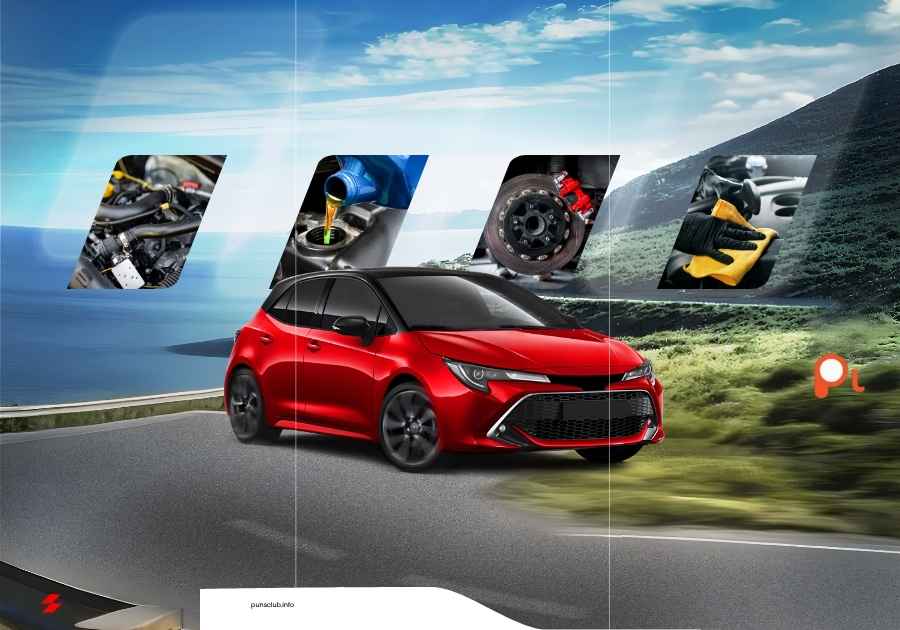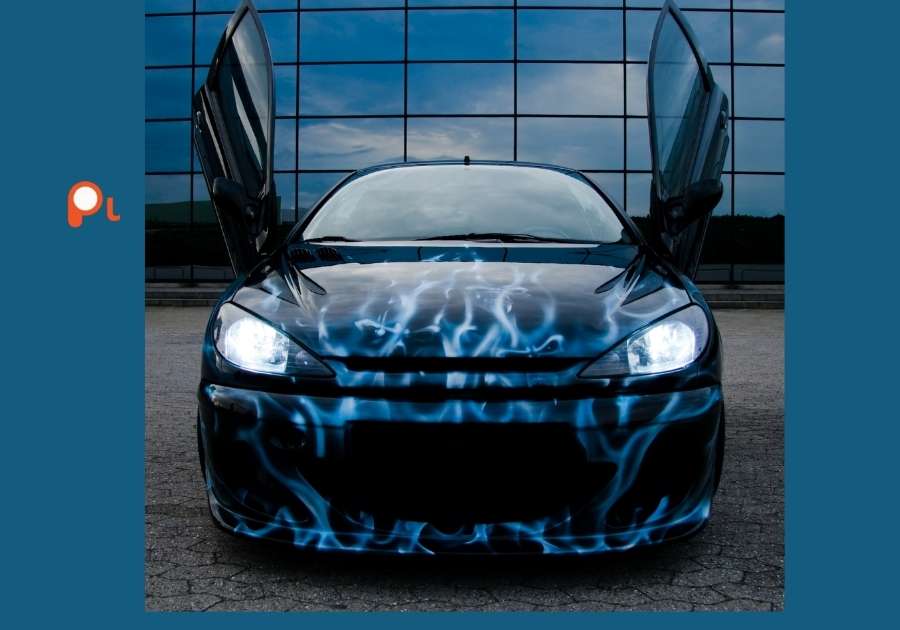When you think of Funny Car moments you have to see to believe, you picture thunderous engines, smoke clouds, and split-second decisions that change everything. In NHRA drag racing, those moments hit hard. The crowd gasps when a Funny Car seemingly defies physics, or when a driver recovers from a fiery crash. In this article, we’ll dive deep into the wildest, funniest, most unbelievable scenes ever captured on the strip.
Funny Car Championship Highlights
From the U.S. Nationals to the Countdown to the Championship, Funny Car races have produced moments etched in drag racing lore. In 2024 alone, NHRA highlighted “five freaky Funny Car moments” that combined thrills, spills, and unexpected heroics. NHRA One memorable championship sprint was decided by just two points—showing how every round matters when drivers push 11,000-horsepower machines at the edge of control.
Take Matt Hagan, a four-time world champion: in one season he balanced aggressive driving with patience, waiting for the perfect moment to “turn on the win light.” At the peak of the Funny Car playoff, a veteran contender like Hagan might gamble on a lighter tune or fresh Goodyear rear slicks, while a young rising star bets on momentum. That tension between experience and risk defines Funny Car championships.
In the Countdown phase, points reset after the U.S. Nationals forces leaders to defend from scratch. A driver might be the points leader entering Countdown, but after six elimination races, only consistent semi’s or better carry you through. The dynamics of playoff math favor consistency, not just raw speed.
Funny Car Drivers To Watch

When I talk about drivers who make you lean forward in your seat, a few names always come up: Jack Beckman, Austin Prock, Ron Capps, and Matt Hagan. Beckman, who also once won a Super Comp championship, now pilots a Peak Chevy in Funny Car. Wikipedia Capps, a three-time Funny Car champion, blends raw aggression with calculated control — his best run: 3.821 seconds at 339.28 mph. Wikipedia
Austin Prock, sometimes overshadowed by his lineage, is a force when he’s on. The chemistry between driver and crew chiefs (like Mike Knudsen or Phil Shuler) often defines whether a car is dialed just right or spins out mid-track. Qualifying position, momentum, and experience all feed into whether a driver becomes a contender or is eliminated early (like a Reading upset in round one).
Watch how these drivers adapt mid-race, sometimes switching fuel trims or staging differently using Christmas Tree start logic or Pro Tree timing tricks. Their off-track personalities—pre-race rituals, media banter—add a human edge to the spectacle.
Funny Car Crashes And Recoveries
Some of the most incredible Funny Car moments you have to see to believe aren’t wins—they’re recovery sagas. In one high-profile case, John Force’s engine exploded at 306 mph, sending his PEAK Chevy Camaro into a fireball and into the wall. The Sun+2People.com+2 He walked away under his own power. That’s sheer bravery plus top-tier safety systems: roll cages, fire suits, chromoly steel tubing, and parachutes.
Recoveries also happen when a driver can reinvent a bad run. After a hard spin or blast off the centerline, crews often rebuild motors, swap parts in fatigued carbon-fiber bodies, and recalibrate suspension systems. In some cases, a car that looked totaled comes back next round, usually because of tire management, clutch tuning, or sheer faith in engine guts.
The safety improvements in nitro Funny Car over decades mean drivers can survive crashes that once ended careers. The margin of error shrinks when you’re running 1,000 feet in less than 3.8 seconds and pushing nitromethane into a supercharged engine.
Top Fuel Funny Car Battles
Fans sometimes confuse Funny Car with Top Fuel, but the difference is striking. A Top Fuel dragster is long and narrow with exposed wheels; a Funny Car hides its mechanics under a carbon-fiber body. Top Fuel often reaches higher speeds, but Funny Car battles bring close door-to-door duels that feel personal.
In head-to-head matchups you’ll see two 7,000-horsepower dragsters explode off the line, clutching the track with multistage clutch systems, shifting through a three-speed transmission. The battle is as much about reaction time as raw power. A slip of the throttle or late shift often means defeat.
These duels get fierce in championship rounds, and sometimes both racers “red light” or cross central lines—earning disqualifications. Strategy is king. Some drivers drive aggressively, going for holeshots. Others wait until late to surge ahead. Those differences—aggressive vs. patient—determine who flips the win light first.
Pro Stock Funny Car Legends

Pro Stock isn’t technically Funny Car, but legendary overlap exists through shared engines, sponsors, and ethos. In Pro Stock, cars must follow strict rules—Pro Stock engine rules 500 cubic inches is common. That 500-cubic-inch Hemi or pushrod V-Twin in some classes like Pro Stock Motorcycle delivers high revs within tight rules.
Legends like Grumpy Jenkins or “Big Daddy” Don Garlits (who ventured into different classes) laid foundations in bracket racing, where dial-in handicap, breakout rule, and indexed racing (weight ÷ cubic inches) come from. Some Pro Stock stars tried Funny Car for thrills. Their engineering discipline—balancing weight, RPM, and clutch—echoes in modern Funny Car tuning.
You’ll see components like four-link rear suspension and injected nitromethane in Funny Car tech, but Pro Stock minds taught generations of racers how to squeeze every horsepower from tight rules.
Top Alcohol Funny Car Races
When you hear “Top Alcohol Funny Car,” imagine a more accessible, legal version of the nitro beasts. These cars burn methanol instead of pure nitromethane and often run shorter distances or eighth-mile formats. Many racers view it as the proving ground before jumping to full Funny Car or Top Fuel.
In these events you’ll sometimes spot drivers juggling super comp or super gas experience. A typical Top Alcohol Funny Car run might not reach the brute speed of 300+ mph, but the visceral sound, wheelstands, and smoke show steal attention. The strategy in switching fuel curves, staging timing, or pressure adjustments mirrors what pro teams do—just with slightly safer margins.
These races are a laboratory where teams perfect multistage clutch tuning and weight-to-cubic-inch formula tradeoffs before going full nitro.
Extreme Funny Car Burnouts
Nothing energizes the crowd like a burnout that engulfs the staging area in thick white clouds. Drivers spin Goodyear rear slicks at high RPM, heating them until they smoke, crackle, and hiss. Let me tell you: some burnouts last 10 seconds or more, leaving the tires glowing and the asphalt sticky.
Some drivers chase world-record burnout distances. While no official NHRA class tracks burnout length, teams brag when they spin tires for entire lanes or nearly reach the wheelbase limit of their car’s body. The visual drama is part spectacle, part tuning test—engine, clutch, and alignment all reveal themselves in those smoky seconds.
Fans around the strip elevate the moment. Kids get close, cellphones flash lightning. Even rival teams stop to watch. A perfect burnout is a statement: “This Funny Car’s alive.”
Super Comp Funny Car Records

Super Comp is a class in which racers run to an 8.90 index (that means they aim to go as close as possible to 8.90 seconds without going faster, or “break out”). Though not a Funny Car class in the pure sense, the record culture of Super Comp influences side classes.
In a Super Comp bracket, a driver must balance speed and consistency. A car that’s too fast gets penalized (you break out), and too slow loses. The timelessness of indexed racing, like 8.90 index (Super Comp), informs how fans and racers judge performance.
While full Funny Cars don’t run 8.90, they share the bracket drama—bracket racing, dial-in, breakout rule—with smaller classes. Among serious fans, comparing a top Funny Car’s 3.8-second pass vs. an 8.90 bracket run becomes a fun mental game.
Behind The Scenes Funny Car Prep
If a Funny Car’s run is a thunderclap, the prep is a symphony of precision and chaos. In the pits, teams tear into injected nitromethane systems, adjust fuel lines, tune clutch staging, and inspect chromoly steel tubing frames. They juggle four-link rear suspension settings and watch weather conditions—density altitude, track temp, humidity.
A test session at Indy or reading the wind data might force a radical gear change or boost adjustment. Crew chiefs like Phil Shuler or Mike Knudsen pore over data logs. Cars run small test hits, measuring eighth-mile times and quarter-mile times, tweaking clutch curves or air-fuel ratio on the fly.
Sometimes the fun chaos yields the funniest moments: a crew member trips over a tire, a clamp flies off, or a piece of bodywork gets swapped wrong. Fans in the pits see the human side—the stress, humor, nervous laughs—behind the polished drag strip spectacle.
A simple table of prep steps might look like:
| Step | Task | Why It Matters |
| 1 | Fuel & oil line check | Prevent leaks or flameouts |
| 2 | Clutch staging tuning | Determines power transfer off the line |
| 3 | Suspension setup | Controls traction and weight shift |
| 4 | Data logging & dashes | Read performance metrics |
| 5 | Final body alignment & cooling | Reduce drag, ensure reliability |
Drag Strip Funny Car Moments
Once the lights go green, strange and wild things happen. You’ll see epic wheelies that bring a Funny Car nearly vertical. Sometimes runners cross the centerline and get disqualified. You might spot surprise rain delays or a Christmas Tree start malfunction, freezing drivers in the beams.
At Reading or Charlotte events, fans recall one round where two cars dragged near each other, sparks flying from the chassis, as both tried to outlast the other. Or a first-round upset—like a top qualifier knocked out by a lesser-known driver—shakes up the bracket. Moments like that become the “did you see that?” stories fans tell year after year.
In some races, a driver spins the tires early, then fights to keep the car straight. In others, a crew chief tells the driver to lift slightly or adjust midtrack. The best stories come when drivers recover from near disaster and still “turn on the win light.”
Also Read: 130+ Funny wireless internet names that will make your neighbors laugh out loud
Funny Car Fans And Reactions
Truth be told, the fans make Funny Car racing more than just explosions and speed. They bring energy, costumes, cheers, and voices. At NHRA events, you’ll see families tailgating, kids decked in driver gear, flags waving, and even homemade signs reading “Turn On That Win Light.”
Reactions on social media explode when a Funny Car flips or smokes out the field. Memes and GIFs proliferate, fans quote Don “the Snake” Prudhomme or John Force’s banter from announcer mics. Young fans in Jr. Dragster divisions or the Jr. Drag Racing League often mimic their idols, comparing their own 5-horsepower single-cylinder engines to the full beasts they hope to one day drive.
Some fans dig bracket racing and try low-speed runs or ET bracket events—learning how dial-in handicap works, understanding indexed racing, or the breakout rule. Their passion makes every Funny Car moment more alive.
Why Funny Car Moments Keep Us Hooked
You watch not just for who wins, but for the unpredictable: the crash that doesn’t end in tragedy, the near-miss, the smoky burnout that announces a beast alive, the underdog who knocks out a favorite. Funny Car moments you have to see to believe showcase raw power, human bravery, technical wizardry, and pure drama. And in every round—from Top Fuel duels to Pro Stock legends, from Super Comp bracket battles to Top Alcohol Funny Car experiments—the spirit stays the same: fast, loud, bold, and full of surprises. If you’ve ever snapped your phone camera at a Funny Car burnout, witnessed a Top Dragster roar past, or heard a fan scream at a close finish, you already know: once you see these moments, you can’t unseen them.

My name is Ronald Scott. I am a professional content writer with a focus on web development. I write clear, engaging, and helpful content that makes websites more user-friendly and informative. My goal is to explain technical topics in a simple way so that everyone can understand.

